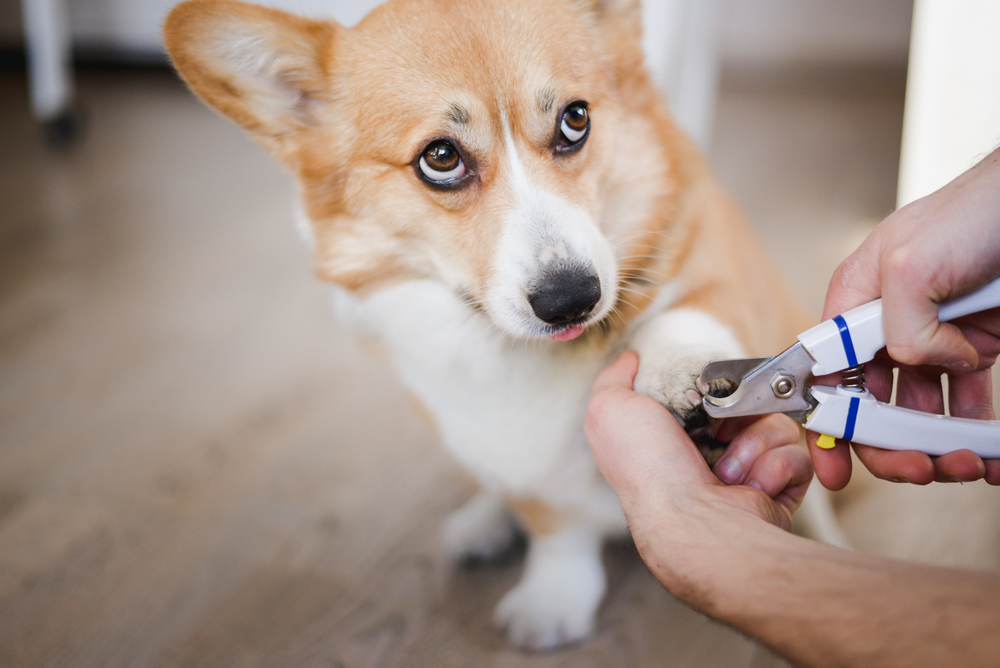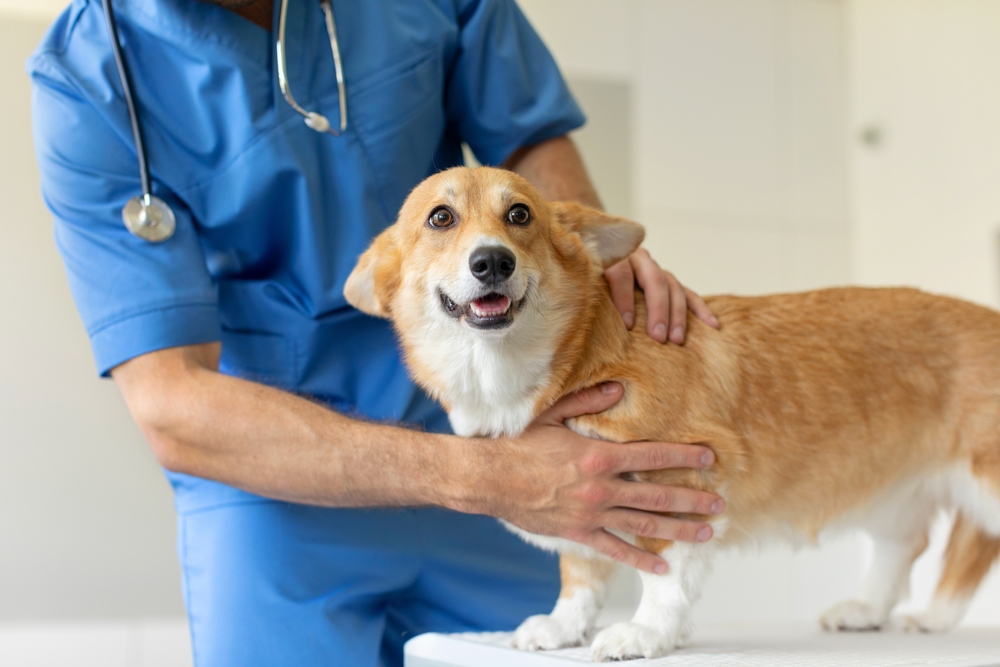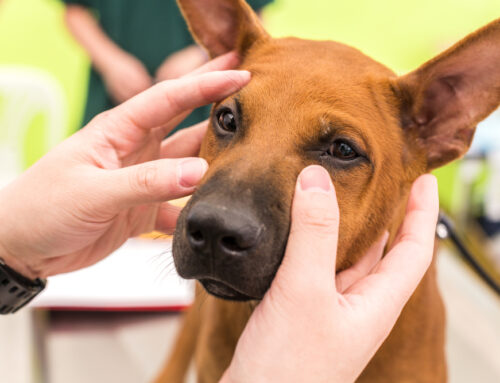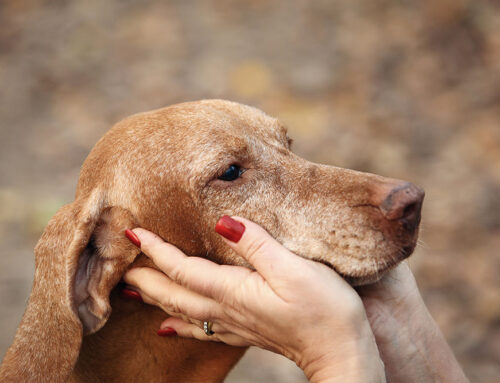Cooperative Care: Making Vet Visits Easier for Everyone
Taking your pet to the vet shouldn’t be a battle. It should be a routine part of their care—calm, respectful, and free from fear. At Central Kentucky Veterinary Center in Georgetown, KY, we know how stressful even the most basic appointments can be for some pets. Whether it’s a nail trim, a vaccine, or simply stepping onto the scale, anxiety can transform a simple task into a struggle. But it doesn’t have to be that way.
With cooperative care, we can reshape the veterinary experience—reducing fear, building trust, and empowering both you and your pet to work together.
What Is Cooperative Care?
Cooperative care is a relationship-centered approach to handling, exams, grooming, and medical procedures. It’s based on positive reinforcement, consent cues, and building trust through repeated, respectful experiences. The goal? Teach pets to willingly participate in their own care—not just tolerate it, but choose to engage in it.
It’s more than training—it’s a partnership built on communication and mutual respect.
Why Cooperative Care Matters
When pets feel safe, everything changes:
- For pets: Less stress, more confidence, and better health outcomes.
- For owners: Fewer difficult appointments, better communication with your vet, and a deeper bond with your pet.
- For veterinary teams: Safer, more efficient care with pets who are calm and responsive.
This approach helps prevent defensive behaviors—like growling, biting, or hiding—by removing fear from the equation. A pet who trusts you to advocate for them is far less likely to panic when the exam begins.
How to Read Your Pet’s Signals
Understanding body language is central to cooperative care. Subtle cues often appear before overt signs of fear:
- Whale eye (showing the whites of the eyes): nervousness or fear
- Lip licking or yawning: early signs of stress
- Tense body, tucked tail, or cowering: discomfort
- Shaking or panting without exertion: elevated anxiety
When you notice these signs, pause. Give your pet space, let them reset, and always end sessions on a positive note.
This guide from CattleDog Publishing offers additional insight: Veterinary Visit Stress Reduction Tips.
Building Skills at Home
Start small, start now. Cooperative care is something you can—and should—begin at home. Think of it as building a communication system between you and your pet.
Foundation Skills to Practice:
- Chin rest: Teach your dog to rest their chin in your hand or on a towel. This cue becomes a way to say “I’m ready.” Once your pet is ready, practice touching different body parts while their chin remains rested.
- Paw lifts: Gently lift a paw, hold for a second, then release. Reward calm participation. Work up to manipulating toes and tapping nails with a clipper.
- Ear and tail touches: Pair gentle handling with treats. Don’t forget to raise their tail- it’s not something that happens often, so it can be very surprising to dogs the first time they need their anal glands expressed or temperature taken.
- Stand on cue: Ask your pet to stand still, reinforcing them for holding position briefly. Practice walking around them while they stay standing still.
Short sessions (30–60 seconds) are ideal. Repeat often, and stop before your pet gets frustrated or fearful. Always reward calm behavior and never push past their limits.
Rehearsing the Real Thing
It’s also important to rehearse what a vet visit feels like:
- Mimic holds and positioning: Watch your vet during appointments and ask them to demonstrate common restraint techniques. Practice these at home with treats and calm praise so your dog isn’t surprised when a tech places gentle pressure on their leg or side.
- Simulate blood draws: Lightly hold a front leg as if preparing for a sample, rewarding generously for cooperation. The first time your dog feels pressure on a vein shouldn’t be during an emergency.
- Use the tools: Practice with a stethoscope, a syringe with no needle, or grooming brush so the smells and sensations are familiar.
These practice sessions aren’t just for desensitization—they’re relationship builders. You’re showing your pet, over and over, that they can trust you to guide and protect them.
Preparing for the Real Visit
Before your next appointment:
- Do casual clinic visits: Stop in for treats and friendly greetings—no procedures required.
- Bring comforts from home: Favorite treats, a toy, or a blanket with familiar smells.
- Stay calm: Your energy influences your pet’s perception of the visit.
- Schedule “happy visits”: Many clinics offer short, no-pressure appointments to help pets form positive associations.
Ready to explore cooperative care with your vet team? Schedule a visit and let’s talk through your goals.
For pets who already have handling sensitivities, this guide can help: Does Your Pet Not Like to Be Touched?
Key Care Procedures: Start Practicing Now
- Nail trims: Start by handling paws. Progress to tapping nails with the trimmer without cutting. Learn more here: Nail Trims – Animal Humane Society
- Ear cleaning: Introduce cotton balls, then gently handle ears. Full guide here: Cornell on Ear Cleaning

Setbacks Are Normal
Some pets need more time—especially those with past trauma or long-standing fears.
- Go at your pet’s pace: Forcing progress will only erode trust.
- Track small wins: Every voluntary paw lift or calm ear touch is a step forward.
- Don’t be afraid to ask for help: A certified trainer or veterinary behaviorist can tailor a plan to your pet’s specific needs.
The Future of Veterinary Care
Veterinary medicine is embracing cooperative care, with more clinics earning Fear Free or Low Stress Handling certifications. It’s a powerful shift—one that puts your pet’s emotional well-being on equal footing with their physical health.
Frequently Asked Questions
How long does cooperative care training take?
It depends. Some pets adjust within weeks, while others need consistent practice over several months. What matters most is maintaining trust and consistency.
What if my pet isn’t food motivated?
Try different reward types—cheese, hot dogs, toys, or even verbal praise. The reward should feel meaningful to your pet.
Can older pets learn this approach?
Yes. It’s never too late to build trust. Older pets often benefit the most from having predictable, respectful routines.
This Is About Trust
At its core, cooperative care is not about compliance—it’s about partnership. Your dog needs to trust that you will advocate for them, protect them, and honor their signals. Every time you give them a choice, reward their participation, and respect their boundaries, you’re reinforcing that trust.
At Central Kentucky Veterinary Center, we’re here to support that partnership. Contact us to learn how we can help you and your pet build a calmer, more confident relationship with care.
Let’s work together to make vet visits better—one empowered pet at a time.







Leave A Comment